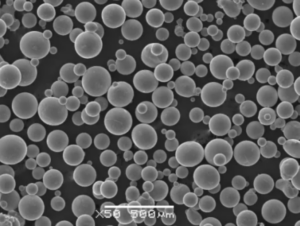لمحة عامة
الكبس الساخن المتساوي الضغط (HIP) هي عملية تصنيع تُستخدم لتقليل مسامية المعادن وتحسين خواصها الميكانيكية وقابليتها للتشغيل. تنطوي هذه العملية على تطبيق درجة حرارة عالية وضغط عالٍ بشكل منتظم حول المعدن، وعادةً ما يتم ذلك باستخدام غاز خامل مثل الأرجون. تُستخدم عملية HIP على نطاق واسع في مختلف الصناعات، بما في ذلك صناعة الطيران والسيارات والطب والطاقة، نظرًا لقدرتها على إنتاج مكونات ذات قوة وكثافة ومقاومة للتعب معززة.
جدول المساحيق المعدنية المستخدمة في HIP
| المسحوق المعدني | التركيب | الخصائص | صفات |
|---|---|---|---|
| Ti-6Al-4V | سبائك التيتانيوم مع 6% Al و4% V | قوة عالية، وخفيفة الوزن، ومقاومة للتآكل، وتوافق حيوي ممتاز | يشيع استخدامه في صناعة الطيران والغرسات الطبية، ويشتهر بنسبة قوته إلى وزنه الممتازة |
| انكونيل 718 | سبيكة النيكل والكروم | قوة عالية، ومقاومة ممتازة للأكسدة والتآكل في درجات الحرارة العالية | يستخدم على نطاق واسع في التوربينات الغازية والفضاء والمفاعلات النووية نظرًا لخصائصه الفائقة في درجات الحرارة العالية |
| فولاذ مقاوم للصدأ 17-4 درجة حموضة 17-4 | الفولاذ المارتنسيتي المصلد بالترسيب المارتنسيتي | قوة عالية، ومقاومة جيدة للتآكل، وسهلة التشغيل الآلي | تستخدم في الصناعات الفضائية والكيميائية والبتروكيميائية والبتروكيميائية |
| AlSi10 ملغ | سبائك الألومنيوم مع 10% Si و0.5% Mg | خفيفة الوزن، وموصلية حرارية جيدة، ومقاومة للتآكل | مثالية لتطبيقات السيارات والفضاء التي تتطلب مكونات خفيفة الوزن وقوية |
| CoCrMo | سبيكة الكوبالت والكروم والموليبدينوم | مقاومة عالية للتآكل، وتوافق حيوي جيد | يشيع استخدامها في الغرسات الطبية وتطبيقات طب الأسنان |
| فولاذ الأدوات H13 | فولاذ الشغل الساخن المصنوع من الكروم والموليبدينوم | صلابة عالية، ومقاومة جيدة للإجهاد الحراري | يستخدم في تطبيقات الصب بالقالب والبثق والتشكيل |
| فولاذ مقاوم للصدأ 316L | الفولاذ الأوستنيتي المقاوم للصدأ | مقاومة ممتازة للتآكل، وقابلية لحام جيدة | يشيع استخدامها في التطبيقات البحرية والطبية وتطبيقات معالجة الأغذية |
| تي-5553 | سبائك التيتانيوم مع 5% Al، 5% V، 5% Mo، 3% Cr | قوة عالية، ومقاومة زحف جيدة، وخفيفة الوزن | تُستخدم في تطبيقات الطيران وتطبيقات السيارات عالية الأداء |
| الفولاذ المصهور | فولاذ النيكل والحديد والنيكل منخفض الكربون | متانة فائقة وصلابة جيدة وسهولة في التشغيل الآلي | غالبًا ما تستخدم في الأدوات والفضاء والتطبيقات عالية الإجهاد |
| MP35N | سبيكة نيكل-كوبالت-كروم-موليبدينوم-موليبدينوم | قوة ممتازة ومقاومة ممتازة للتآكل والتوافق الحيوي | يُستخدم في التطبيقات الطبية والفضائية والتطبيقات تحت سطح البحر حيث تكون القوة ومقاومة التآكل أمرًا بالغ الأهمية |
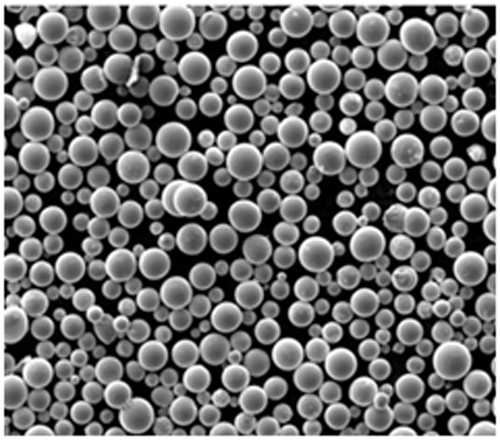
تكوين الكبس الإيزوستاتيكي الساخن (HIP)
تختلف تركيبة المواد المستخدمة في HIP بناءً على التطبيق المحدد والخصائص المرغوبة للمنتج النهائي. تشمل المساحيق المعدنية شائعة الاستخدام في HIP سبائك التيتانيوم والسبائك الفائقة القائمة على النيكل والفولاذ المقاوم للصدأ وفولاذ الأدوات. تقدم كل من هذه المواد خصائص فريدة تجعلها مناسبة للتطبيقات الصناعية المختلفة.
خصائص وخصائص الكبس الساخن المتساوي الضغط (HIP)
يوفر الكبس المتوازن الساخن العديد من الفوائد، بما في ذلك الخصائص الميكانيكية المحسّنة والكثافة المحسّنة وتقليل المسامية. وتؤدي هذه الخصائص إلى مكونات ذات قوة فائقة ومقاومة للإجهاد والمتانة بشكل عام. فيما يلي جدول تفصيلي يلخص خصائص وخصائص مواد الكبس المتوازن الساخن.
| الممتلكات | الوصف |
|---|---|
| الكثافة | يقلل HIP بشكل كبير من المسامية، مما يؤدي إلى مكونات عالية الكثافة |
| القوة | تعمل العملية على تعزيز القوة الميكانيكية للمادة |
| مقاومة التعب والإجهاد | مقاومة محسنة للإجهاد والتحميل الدوري |
| الصلابة | صلابة معززة بسبب تطبيق الضغط المنتظم |
| مقاومة التآكل | تُظهر بعض السبائك المستخدمة في HIP مقاومة ممتازة للتآكل |
| التوافق الحيوي | تعتبر مواد مثل Ti-6Al-4V و CoCrMo متوافقة حيويًا، مما يجعلها مناسبة للغرسات الطبية |
| التوصيل الحراري | توفر بعض مواد HIP، مثل AlSi10Mg، توصيلًا حراريًا جيدًا |
| مقاومة التآكل | توفر سبائك مثل CoCrMo وH13 فولاذ الأدوات مقاومة عالية للتآكل، وهي ضرورية للأدوات والتطبيقات الطبية |
تطبيقات الكبس الإيزوستاتيكي الساخن (HIP)
يُستخدم HIP في مجموعة متنوعة من التطبيقات في مختلف الصناعات. وقدرتها على إنتاج مكونات ذات خواص ميكانيكية فائقة تجعلها عملية لا تقدر بثمن في القطاعات الحيوية. يوضح الجدول أدناه بعض التطبيقات الشائعة ل HIP.
| الصناعة | طلب |
|---|---|
| الفضاء | مكونات المحركات النفاثة، وشفرات التوربينات، والأجزاء الهيكلية |
| السيارات | أجزاء المحرك، ومكونات ناقل الحركة، والهياكل خفيفة الوزن |
| الطبية | الغرسات (الورك والركبة والأسنان) والأدوات الجراحية |
| الطاقة | مكونات المفاعل النووي، التوربينات الغازية |
| الأدوات | قوالب الصب بالقالب وقوالب البثق وأدوات الحدادة |
| النفط والغاز | مكونات تحت سطح البحر، وأدوات الحفر |
| الدفاع | تصفيح الدروع ومكونات الأسلحة |
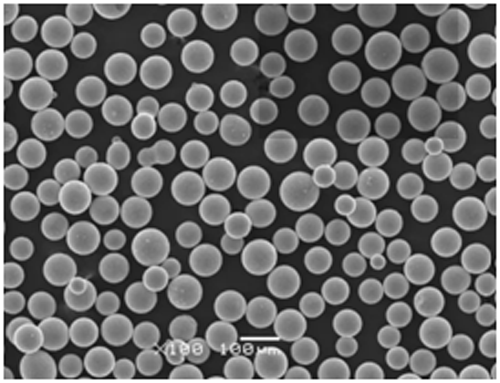


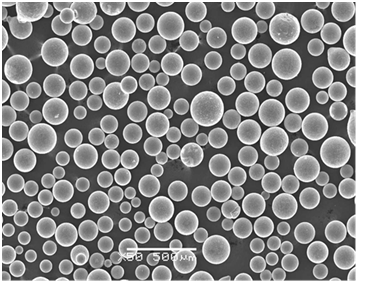
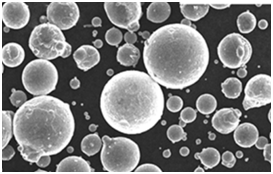

المواصفات والمقاسات والدرجات والمعايير الخاصة بـ HIP
تختلف مواصفات ومعايير مواد HIP بناءً على الصناعة والتطبيق. فيما يلي جدول يقدم لمحة عامة عن المواصفات والأحجام والدرجات والمعايير الشائعة المرتبطة بالـ HIP.
| المواد | المواصفات | المقاسات | درجات | المعايير |
|---|---|---|---|---|
| Ti-6Al-4V | أستم B348، أم أس 4928 | القطر: 10-500 مم | الصف الخامس | ASTM، AMS |
| انكونيل 718 | AMS 5662، ASTM B637، AMS 5662، ASTM B637 | القطر: 6-400 مم | UNS N07718 | ASTM، AMS |
| فولاذ مقاوم للصدأ 17-4 درجة حموضة 17-4 | A564، A564، AMS 5643 | القطر: 8-300 مم | الصف 630 | ASTM، AMS |
| AlSi10 ملغ | ISO 3522 | القطر: 5-250 مم | – | الأيزو |
| CoCrMo | أستم f75، أيزو 5832-12 | القطر: 4-150 مم | – | ASTM، ISO |
| فولاذ الأدوات H13 | أستم إيه 681، داين 1.2344 | القطر: 10-500 مم | H13 | ASTM، DIN |
| فولاذ مقاوم للصدأ 316L | A276 astm A276، AMS 5648 | القطر: 6-300 مم | 316 لتر | ASTM، AMS |
| تي-5553 | AMS 4991 | القطر: 8-200 مم | الصف 5553 | AMS |
| الفولاذ المصهور | AMS 6514 | القطر: 10-300 مم | الصف 250، 300 | AMS |
| MP35N | أستم F562، أم أس 5844 | القطر: 5-150 مم | – | ASTM، AMS |
تفاصيل الموردين والأسعار
عند التفكير في HIP لاحتياجات التصنيع الخاصة بك، من الضروري معرفة الموردين وتفاصيل الأسعار. يسرد الجدول أدناه بعض الموردين ذوي السمعة الطيبة والأسعار التقريبية لمختلف مواد HIP.
| المورد | المواد | السعر (بالكيلوغرام) |
|---|---|---|
| تكنولوجيا النجار | Ti-6Al-4V | $150 |
| المعادن الخاصة | انكونيل 718 | $180 |
| مواد ساندفيك | فولاذ مقاوم للصدأ 17-4 درجة حموضة 17-4 | $80 |
| حبيبات ECKA | AlSi10 ملغ | $50 |
| معادن ATI | CoCrMo | $200 |
| يودهولم | فولاذ الأدوات H13 | $70 |
| أوتوكومبو | فولاذ مقاوم للصدأ 316L | $60 |
| تيميت | تي-5553 | $170 |
| أرسيلور ميتال | الفولاذ المصهور | $160 |
| معادن فورت واين ميتالز | MP35N | $250 |
مزايا وقيود HIP
بينما يقدم برنامج HIP العديد من الفوائد، من الضروري فهم مزاياه وحدوده. يقدم الجدول أدناه مقارنة بين إيجابيات وسلبيات HIP.
| مزايا | محددات |
|---|---|
| يقلل من المسامية ويحسن الكثافة | ارتفاع تكلفة المعدات والتشغيل |
| يعزز الخواص الميكانيكية | تقتصر على أحجام مواد محددة |
| يزيد من مقاومة الإجهاد والتآكل. | أوقات المعالجة الطويلة |
| تطبيق الضغط المنتظم | يتطلب خبرة متخصصة |
| يحسن تجانس المواد | غير مناسب لجميع أنواع المواد |
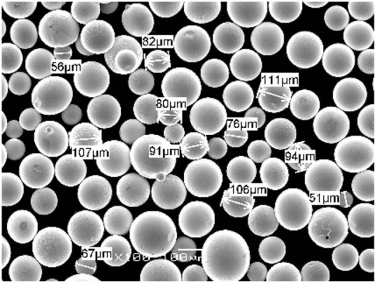
أسئلة وأجوبة
| سؤال | الإجابة |
|---|---|
| ما هو الكبس المتوازن الساخن (HIP)؟ | HIP هي عملية تصنيع تطبق الضغط العالي ودرجة الحرارة العالية على المواد لتحسين خصائصها. |
| كيف يحسن HIP خصائص المواد؟ | يقلل HIP من المسامية ويزيد من الكثافة ويعزز الخواص الميكانيكية مثل القوة ومقاومة الإجهاد. |
| ما هي المواد المستخدمة عادةً في HIP؟ | تشمل المواد الشائعة سبائك التيتانيوم والسبائك الفائقة القائمة على النيكل والفولاذ المقاوم للصدأ وفولاذ الأدوات. |
| هل هناك أي قيود على استخدام HIP؟ | نعم، يمكن أن يكون HIP مكلفًا، وله أوقات معالجة طويلة، ويقتصر على أحجام وأنواع محددة من المواد. |
| ما هي الصناعات التي تستخدم HIP؟ | يُستخدم HIP في صناعات الطيران والسيارات والطب والطاقة والأدوات والنفط والغاز والصناعات الدفاعية. |
| ما هي فوائد برنامج HIP؟ | تشمل المزايا تحسين الكثافة والقوة ومقاومة التعب والتجانس العام للمواد. |
| هل HIP مناسب لجميع المواد؟ | لا، لا يناسب HIP جميع المواد. فهو يعمل بشكل أفضل مع بعض السبائك والمعادن. |
| كيف يؤثر HIP على تكلفة الإنتاج؟ | يمكن أن يزيد HIP من تكاليف الإنتاج بسبب المعدات باهظة الثمن والنفقات التشغيلية التي ينطوي عليها الأمر. |

